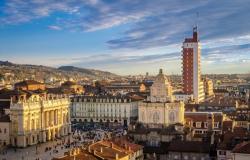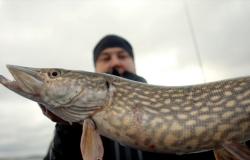Professor, ethnologist Libertas Klimka says that according to old Lithuanian customs, Jurginės is a very important holiday, marking the beginning of the Ganiava.
“The Lithuanian proverb says: ‘Saint George opens the barns’, and in autumn St. Martyn closes them. This is a very important cycle when cattle were grazing in the field,” says the professor.
According to L. Klimka, this day can show what the rest of spring will be like. “If there is frost in the morning, or, as the beautiful proverb says, “if St. George rode on a horse, spring will be late. If the grass is dewy during St. George’s Day, a good, pleasant, early spring awaits,” explains L. Klimka.
St. St. George’s Day is surrounded by customs
L. Klimka says that St. George’s Day is a very important spring holiday. It also shows aspects of Baltic history. For example, there was a god Ganiklis in the old customs of the Baltics – and Dionizas Poška, Motiejus Valančius, Liudvikas Adomas Jucevičius also write about this.
“And the old Lithuanian customs were to honor this god – to make an offering. First, the cattle were driven out of the barn. Many rites were related to the fact that the herd would be saved without loss and managed to avoid being torn apart by wolves. Wolves were St. George’s kurtas, so people thought that if they prayed to St. Jurgis, he will tame his greyhounds.
In order to protect the animals, two eggs painted with onion skins, called “jurguchis” and a long, two-handed saw were placed on the threshold of the barn. Cattle being herded from the barn cheerfully welcomed the first green, but the owners paid attention to whether they had tripped on daisies and sawdust.
If it got in the way, it meant that the animal was destined for a wolf and no one would save it, and if not, everything will be fine,” says the professor.
They tried to protect their beloved animals
The enthologist teaches that later the owner took the lock in his hand, brought the herd, walked around it and after locking the lock, placed it on the threshold. This means that the entire herd will be protected from wolves and natural disasters in the summer.
“The master was followed by the shepherd, who used to beat every horse or cow on the ass with a rowan whip. Then they put the whip in the barn. Later, the same shepherd would collect as many stones as there are sheep and eat all the stones in a corner of the barn.
It symbolized the success achieved during grazing, to drive all the animals happily.
The landlady brought an earthen pot from the shed, put coals in there and, walking with the pot, sprinkled the cow’s udders and muzzles with sand so that the cattle would not get sick or be bitten by the snake.
Later, the owner decided to release the geese and ducklings into the yard. They were released by taking them one at a time and inserting them through the resin-soaked hub of an old wheel. This protected the animals from hawks. This day was dedicated to the welfare of animals”, says L. Klimka.
Libertas Klimka (Photobank)
It is forbidden to do so on this day
The ethnologist emphasizes that special attention was paid to horses. According to L. Klimka, if the weather was better, the owner would take the horses to a stream or lake, bathe them, massage their backs with a brush, trim their hooves and let them rest.
“The horses rested on this day, except when it was necessary to go with them to the fair. In Vilnius, the Jurginii fair lasted for even 2 weeks. Even now there is a preserved horse street in Vilnius,” reminds the professor.
L. Klimka says that it was forbidden to move the earth in various ways. People did not allow each other to approach, to harrow, or to drive stakes:
“This day is dedicated only to the welfare of animals. These rites were performed regardless of the weather. If it was white outside the window, as it is these days, people would say: “Saint George is coming on a wild horse.” However, even if it was cold, the animals had to be taken out of the barn at least for a while.
And later, the hostess would bake a special bread into which she would beat a couple of eggs. Bread was given to beggars or a loaf was taken to the rye field. Rye during St. The dahlias must be raised so that even “the crows cannot see”.
Usually, the eldest head of the family went to inspect the rye and said to the youngest family member: “Let’s go see how the rye grows.”
St. George’s Day is also celebrated in the church
The ethnologist says that on this day, people used to go to church, because in most villages, St. George’s Altar. On St. George’s altar were cast wax figurines resembling animals.
“The faithful gave that wax to the church, and the sacristy used it to make candles.
And in Palanga, on Birutė mountain, there was a place for observing astronomical dates, the main axis of which was directed to Jurgines. Until now in Palanga St. Yugi’s indulgences are a notable holiday. The Crusaders occupied the Palanga area, destroyed the pagan observatory and built a church there.
Now there is a chapel named after none other than St. In the name of George,” he says.
The heat will not make you happy yet
L. Klimka says that spring will last a long time. According to the man, the frosts that usually visit every spring are approaching. It is very difficult to predict the severity of frosts, because they depend on the spread of vegetation: “If a lot of plants turn green suddenly, they evaporate a lot of ground water. The surface of the earth must cool down – if the water evaporates, the temperature drops.”
According to the professor, in the last days, we received frosts, which are called “fern frosts” because they froze the ferns in the forest. The professor says that in ancient times, at such a time, the villagers used to watch whether the birch or the alder would burst first. This is how they predicted the weather of the first half of summer.
“If the alder sprouts first, there will be a lot of rain, and if the birch – the weather will be dry and beautiful.” According to the professor, in order to find out when the heat will return, you should watch when the swallows fly. “They bring real warmth. People used to say: “Don’t throw your stomach until the swallows come back.” So it will still be cold,” he says.
Rainy summer is also predicted by ants, if they build a nest on a tree stump. Also look at the birds’ nests – if they are twisted on the south side, it means that the summer will be cool and windy, so the birds will avoid it in advance. Still other prophets are storks.
“The storks flew in a bit late this year, which shows that the heat is not in a hurry to arrive. Later, people watched how the storks would behave when they laid their eggs in the nest. They sometimes count their number and throw some away – either a stork or an egg.
If an egg is thrown, it will be a bad year, if it is a cockroach, nothing is bad,” said the professor.
Warm weather will visit only in the second half of May. Changeable weather will await. Early indications were that spring would be late. After all, recently there were two summer days, and now we have already received frost.
Tags: Today special day Lithuania revealed kind weather awaits
-





